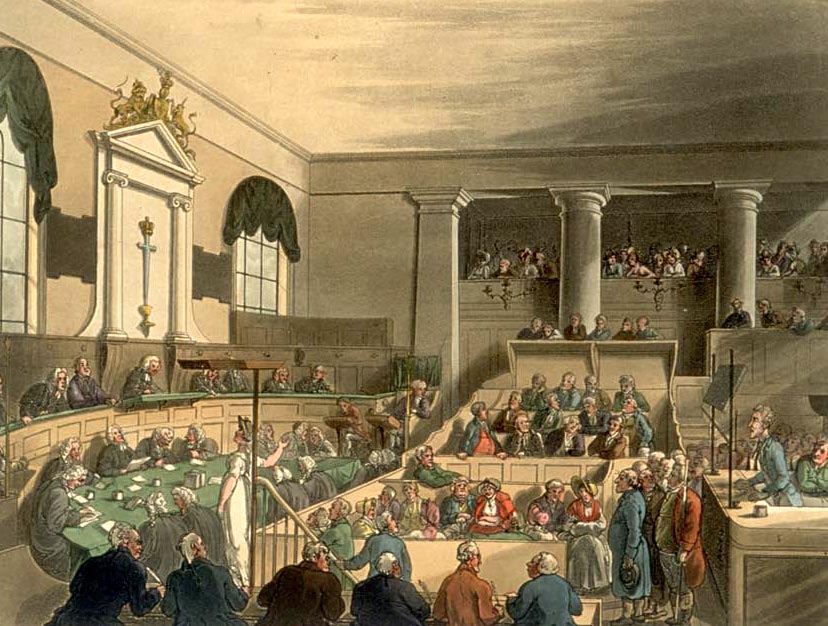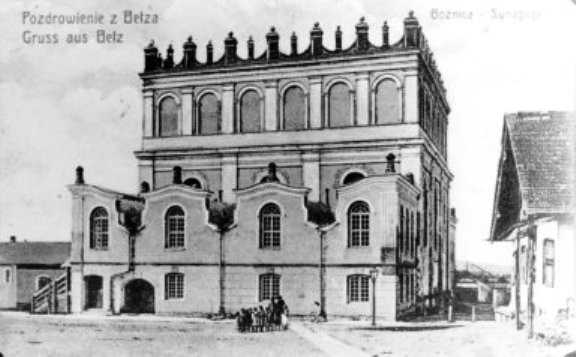|
Stanisław Zamoyski
Stanisław Zamoyski (1519–1572) was a Polish nobleman (szlachcic). He was Łowczy of Chełmno since 1561, castellan of Chełmno since 1566, Court Hetman of the Crown and starost of Belz. He was married to Anna Herburt and had three children with her: Jan Zamoyski Jan Sariusz Zamoyski (; 19 March 1542 – 3 June 1605) was a Polish nobleman, magnate, statesman and the 1st '' ordynat'' of Zamość. He served as the Royal Secretary from 1565, Deputy Chancellor from 1576, Grand Chancellor of the Crown f ..., Feliks Zamoyski and Anna Zamoyska. He was later married to Anna Orzechowska with whom he had two children: Elżbieta Zamoyska and Zofia Zamoyska. References 1519 births 1572 deaths Court Hetmans of the Polish–Lithuanian Commonwealth Stanislaw {{poland-noble-stub ... [...More Info...] [...Related Items...] OR: [Wikipedia] [Google] [Baidu] |
Jelita Coat Of Arms
Jelita is a Polish heraldry, Polish coat of arms. It was used by several szlachta families. History One of the oldest Polish coats of arms. First depicted on the seal of Tomisław z Mokrska from 1316. Additionally, the Polish medieval chronicler, diplomat and soldier Jan Długosz referred to those bearing the Jelita coat of arms as "a clan born in Poland of men who are modestly devoted to dogs and hunting." Legend Legend has it that this coat of arms was granted by King Władysław I Łokietek to a peasant soldier (and his family) after the Battle of Płowce (1331) in which the Polish armies defeated the 40,000-strong force of the Teutonic Knights with minimal casualties. The man fought with great courage and only fell in battle when pierced by three spears in the abdominal area which caused his bowels to fall out. Shortly before his death, the King ennobled the fatally wounded man. Hence, the three crossed spears in the coat of arms, as well as the name Jelita, Bowels or Guts ... [...More Info...] [...Related Items...] OR: [Wikipedia] [Google] [Baidu] |
Zamoyski
The House of Zamoyski (plural: Zamoyscy) is an important Poland, Polish noble (''szlachta'') family Magnates of Poland and Lithuania, belonging to the category of Polish magnates. They used the Jelita coat of arms. The surname "Zamoyski" literally means "of/from Zamość" and reflects the fact that the family originally were lords of Zamość, according to a tradition of Polish surname, surnames of Polish nobility. The family was influential in Polish politics for several centuries, and its members held various official titles, including those of Count and Countess. History The family traces its origins to the Łaźniński family. In the 15th century, Tomasz Łaźniński bought an estate in Stary (Old) Zamość. His sons Florian (died 1510) and Maciej assumed the name Zamoyski, and the family began to rise in prominence. Florian’s grandson Stanisław was the castellan of Chełm, and his son, Jan Zamoyski, arguably the most famous member of the family, became a kanclerz, chanc ... [...More Info...] [...Related Items...] OR: [Wikipedia] [Google] [Baidu] |
Feliks Zamoyski
Feliks Zamoyski (died 1535) was a Polish nobleman ( szlachcic). He became the Wojski of Bełz Voivodeship in 1514, the Łowczy of Chełm Land in 1517, and the Wojski of Chełm, Tax collector (poborca) of Chełm and Belz in 1524. He also became the District Writer of Chełm in 1525 and the Podkomorzy of Chełm. In 1517 Feliks and his brother Mikołaj received a payment of debt in the amount of 1,000 florins from Jan Ostrowski, a wealthy landowner from what is now known as Skoków. Zamoyski used a portion of the collection to fund the building of a fortified castle which was used in a 1529 battle to repel an invasion by the Crimean Tatars. His grandson, Jan Zamoyski, founded the city of Zamość Zamość (; ; ) is a historical city in southeastern Poland. It is situated in the southern part of Lublin Voivodeship, about from Lublin, from Warsaw. In 2021, the population of Zamość was 62,021. Zamość was founded in 1580 by Jan Zamoyski ... upon the small village that ... [...More Info...] [...Related Items...] OR: [Wikipedia] [Google] [Baidu] |
Szlachcic
The ''szlachta'' (; ; ) were the noble estate of the realm in the Kingdom of Poland, the Grand Duchy of Lithuania, and the Polish–Lithuanian Commonwealth. Depending on the definition, they were either a warrior "caste" or a social class, and they dominated those states by exercising political rights and power. Szlachta as a class differed significantly from the feudal nobility of Western Europe. The estate was officially abolished in 1921 by the March Constitution."Szlachta. Szlachta w Polsce" ''Encyklopedia PWN'' The origins of the ''szlachta'' are obscure and the subject of several theories. The ''szlachta'' secured substantial and increasing political power and rights throughout its histo ... [...More Info...] [...Related Items...] OR: [Wikipedia] [Google] [Baidu] |
Chełmno
Chełmno (; older ; , formerly also ) is a town in northern Poland near the Vistula river with 18,915 inhabitants as of December 2021. It is the seat of the Chełmno County in the Kuyavian-Pomeranian Voivodeship. Due to its regional importance in the Middle Ages, the town gave its name to the entire area, Chełmno Land (and later an administrative unit of the Kingdom of Poland, the Chełmno Voivodeship), the local Catholic diocese and Kulm law, a municipal form of government for over 180 cities and towns in Central Europe, most notably Warsaw, Gdańsk, Toruń, Königsberg, Olsztyn, Płock and Klaipėda. It possesses a well-preserved historic Old Town, listed as a Historic Monument of Poland, with landmark Gothic churches and a Renaissance town hall. It was an important education center in the early modern period, and the place of pioneering surgical operations by renown Polish 19th-century surgeon Ludwik Rydygier. Name The city's name ''Chełmno'' comes from ''chelm'', t ... [...More Info...] [...Related Items...] OR: [Wikipedia] [Google] [Baidu] |
Castellan
A castellan, or constable, was the governor of a castle in medieval Europe. Its surrounding territory was referred to as the castellany. The word stems from . A castellan was almost always male, but could occasionally be female, as when, in 1194, Beatrice of Bourbourg inherited her father's castellany of Bourbourg upon the death of her brother, Roger. Initial functions During the Migration Period after the fall of the Western Roman Empire (third to sixth century), foreign tribes entered Western Europe, causing strife. The answer to recurrent invasion was to create fortified areas which evolved into castles. Some military leaders gained control of several areas, each with a castle. The problem lay in exerting control and authority in each area when a leader could only be in one place at a time. To overcome this, they appointed castellans as their trusted vassals to manage a castle in exchange for obligations to the landlord, often a noble. In the 9th century, as fortification ... [...More Info...] [...Related Items...] OR: [Wikipedia] [Google] [Baidu] |
Court Hetman
A court is an institution, often a government entity, with the authority to adjudicate legal disputes between parties and administer justice in civil, criminal, and administrative matters in accordance with the rule of law. Courts generally consist of judges or other judicial officers, and are usually established and dissolved through legislation enacted by a legislature. Courts may also be established by constitution or an equivalent constituting instrument. The practical authority given to the court is known as its jurisdiction, which describes the court's power to decide certain kinds of questions, or petitions put to it. There are various kinds of courts, including trial courts, appellate courts, administrative courts, international courts, and tribunals. Description A court is any person or institution, often as a government institution, with the authority to adjudicate legal disputes between parties and carry out the administration of justice in civil, criminal ... [...More Info...] [...Related Items...] OR: [Wikipedia] [Google] [Baidu] |
Starost
Starosta or starost (Cyrillic: ''старост/а'', Latin: ''capitaneus'', ) is a community elder in some Slavic lands. The Slavic root of "starost" translates as "senior". Since the Middle Ages, it has designated an official in a leadership position in a range of civic and social contexts throughout Central and Eastern Europe. In reference to a municipality, a ''starosta'' was historically a senior royal administrative official, equivalent to a county sheriff or seneschal, and analogous to a '' gubernator''. In Poland, a ''starosta'' administered crown territory or a district called a '' starostwo''. In the early Middle Ages, a ''starosta'' could head a settled urban or rural community or other community, as in the case of a church starosta or an '' artel'' starosta. A starosta also functioned as a master of ceremonies. Czech Republic and Slovakia In the Czech Republic and Slovakia ''starosta'' is the title of a mayor of a town or village. Mayors of major cities use the ... [...More Info...] [...Related Items...] OR: [Wikipedia] [Google] [Baidu] |
Belz
Belz (, ; ; ) is a small city in Lviv Oblast, western Ukraine, located near the border with Poland between the Solokiya River (a tributary of the Bug River) and the Richytsia stream. Belz hosts the administration of Belz urban hromada, one of the hromadas of Ukraine. Its population is approximately Origin of name There are a few theories as to the origin of the name: * Celtic – ''belz'' (water) or ''pelz'' (stream), * German – ' (fur, furry) * Old Slavic and the Boyko dialect – «белз» or «бевз» (muddy place), * Old East Slavic – «бълизь» (white place, a glade in the midst of dark woods). The name occurs only in two other places, the first being a Celtic area in antiquity, and the second one being derived from its Romanian name: * '' Belz'' (department Morbihan), Brittany, France * '' Bălți'' (/''Beljcy'', also known in Yiddish as ''Beltz''), Moldova (Bessarabia) History Early history Belz is situated in a fertile plain which tribes o ... [...More Info...] [...Related Items...] OR: [Wikipedia] [Google] [Baidu] |
Jan Zamoyski
Jan Sariusz Zamoyski (; 19 March 1542 – 3 June 1605) was a Polish nobleman, magnate, statesman and the 1st '' ordynat'' of Zamość. He served as the Royal Secretary from 1565, Deputy Chancellor from 1576, Grand Chancellor of the Crown from 1578, and Great Hetman of the Crown from 1581. Zamoyski was the General Starost of the city of Kraków from 1580 to 1585, Starost of Bełz, Międzyrzecz, Krzeszów, Knyszyn and Tartu. An important advisor to Kings Sigismund II Augustus and Stephen Báthory, he was one of the major opponents of Bathory's successor, Sigismund III Vasa, and one of the most skilled diplomats, politicians and statesmen of his time, standing as a major figure in the politics of the Polish–Lithuanian Commonwealth throughout his life. Biography Childhood and education Jan Zamoyski was born on 19 March 1542 to Stanisław Zamoyski and Anna Herburt in Skokówka. He started his education in a school in Krasnystaw but when he was thirteen years old h ... [...More Info...] [...Related Items...] OR: [Wikipedia] [Google] [Baidu] |
Anna Zamoyska
The House of Zamoyski (plural: Zamoyscy) is an important Polish noble (''szlachta'') family belonging to the category of Polish magnates. They used the Jelita coat of arms. The surname "Zamoyski" literally means "of/from Zamość" and reflects the fact that the family originally were lords of Zamość, according to a tradition of surnames of Polish nobility. The family was influential in Polish politics for several centuries, and its members held various official titles, including those of Count and Countess. History The family traces its origins to the Łaźniński family. In the 15th century, Tomasz Łaźniński bought an estate in Stary (Old) Zamość. His sons Florian (died 1510) and Maciej assumed the name Zamoyski, and the family began to rise in prominence. Florian’s grandson Stanisław was the castellan of Chełm, and his son, Jan Zamoyski, arguably the most famous member of the family, became a chancellor, hetman, and founded the Zamoyski's Ordynat - a large esta ... [...More Info...] [...Related Items...] OR: [Wikipedia] [Google] [Baidu] |



